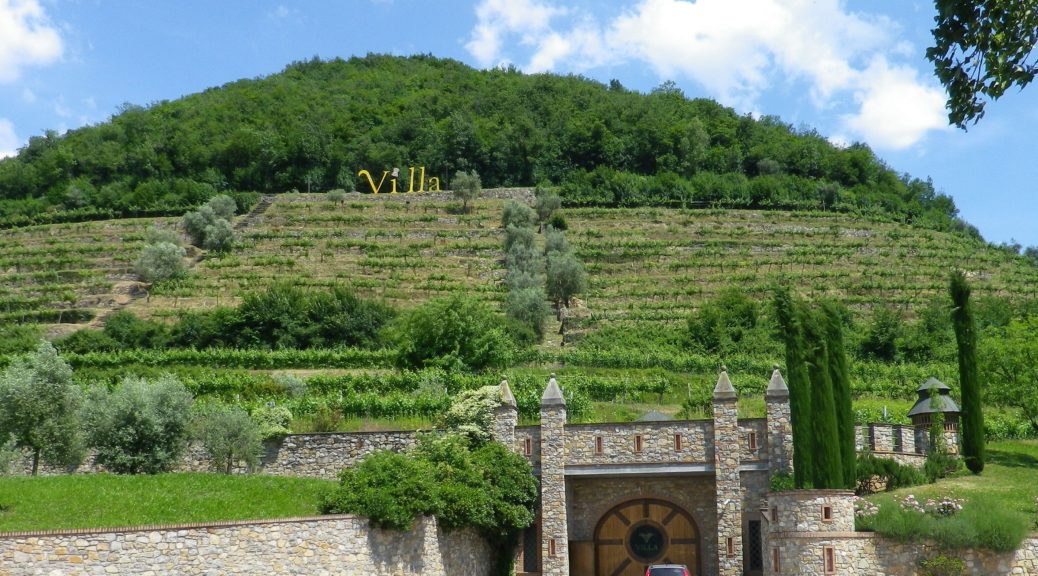As wine tourism in Italy expands to include active options, there are more trails to hike or bike than ever before. I recently had another chance to visit Franciacorta. East of Milan, and just south of the sparkling clear waters of Lake Iseo, Franciacorta is an ideal location for a wine-themed biking vacation. The lake, in addition to being a beautiful, scenic backdrop, helps to moderate temperature; the hills shelter you and the vines from excessive wind; the wine villages are small, and charming. Best of all, it is quiet and laid-back: I encountered more people cycling than driving on some of the back roads.
Here, in addition to delicious sparkling wines (accompanied by the best Italian food I have eaten in a long time), there are five cycling circuits, each numbered, color-coded, and cleverly named after one of Franciacorta’s famed sparkling wine products. (See the Brut Trail here.) This time, I biked along the Percorso Pas Dose/Blu circuit. The route, the wine, and the food resulted in yet another perfect mini-vacation.
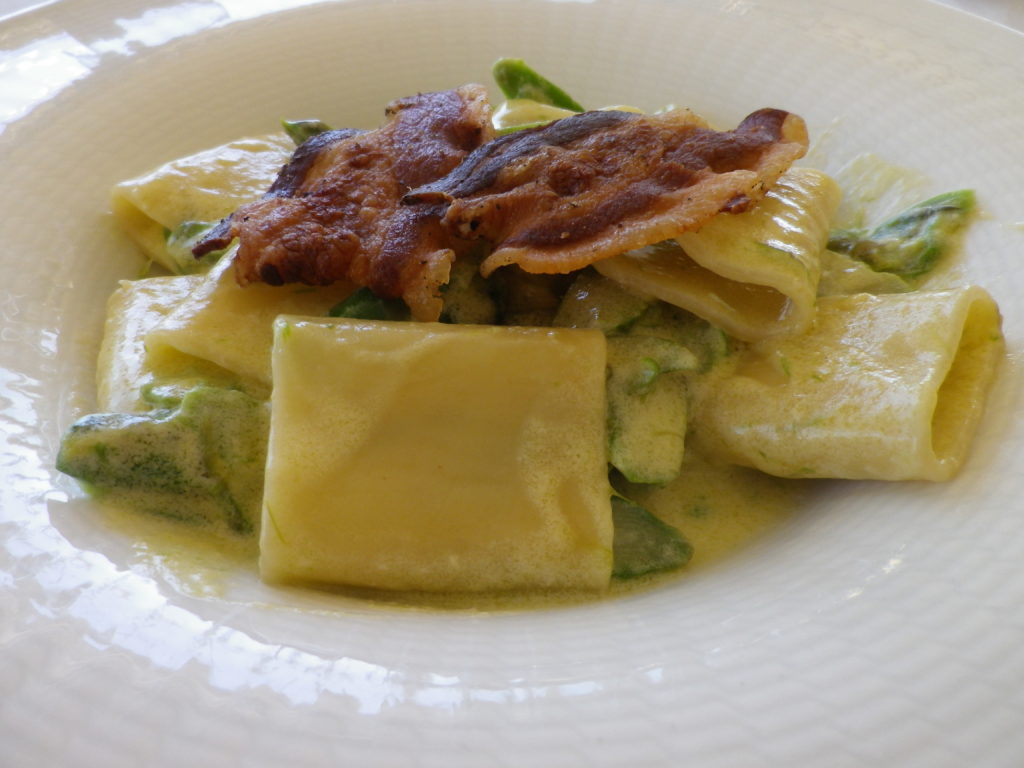
Once this part of Franciacorta had been tamed by the agricultural practices of the monks of centuries past, hamlets, castles and several religious foundations took permanent root. It seemed appropriate therefore to start my adventure where the Cistercian monks who reclaimed this corner of Franciacorta for agriculture began – at their millennium-old monastery of San Pietro in Lamosa, in Provaglio D’Iseo.
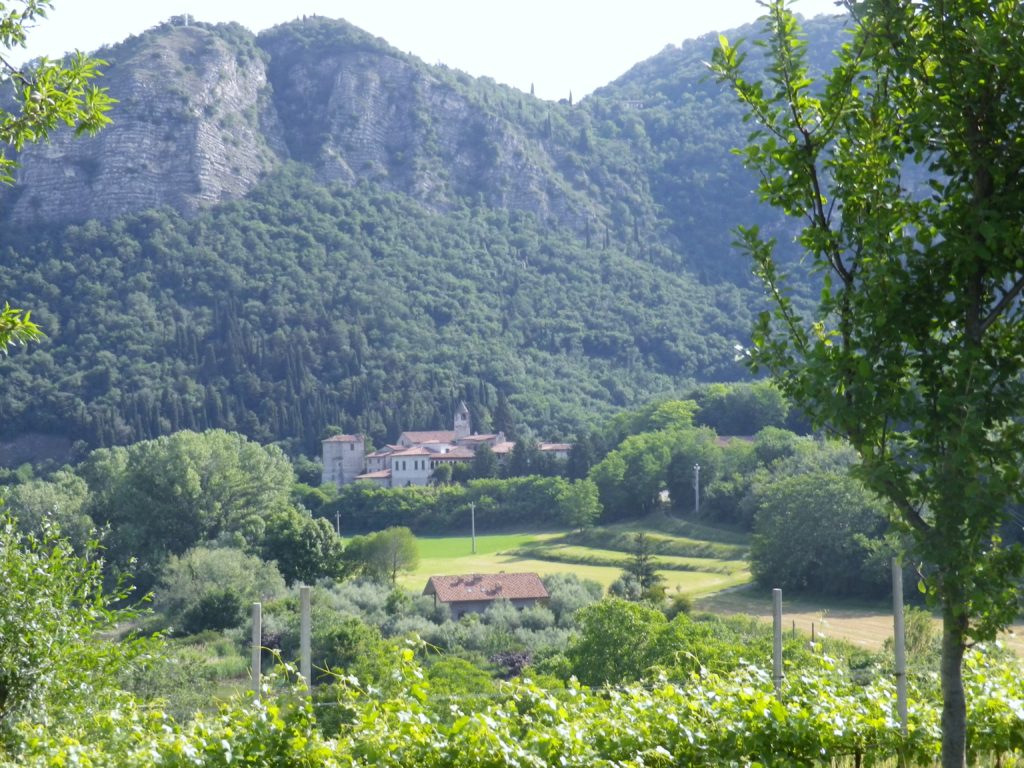
More important than the symbolism though, I began there for three practical reasons: the monastery has two large parking lots nearby; the monastery and the stark black and gray striated cliff face soaring above it serve as landmarks for miles; and the monastery’s well-preserved conglomeration of Romanesque architecture set amidst dramatic scenery make it a must-see site. As the furthest point north on the trail, all I had to do was lock the car and start pedaling south.
Soon I was in fields and vineyards, on my way to the small town of Monterotondo. As the name implies, the town sits on a round hilltop. It involves a climb, but it is a long and steady incline, vice a steep one. From there, it was all downhill to past fields and olive trees to the next town.
Medieval architecture featured prominently on this particular trail. Some of it was religious, such as San Pietro in Lamosa. Then there was the military architecture, most of it visible on distant hilltops. However, come the flat terrain around Passirano, a castle suddenly came into view at the edge of town. Situated on such flat ground, its massive walls, not geography, had to suffice for its defense. Its high and imposing stone walls rise up from vineyards, offering dramatic photo opportunities.
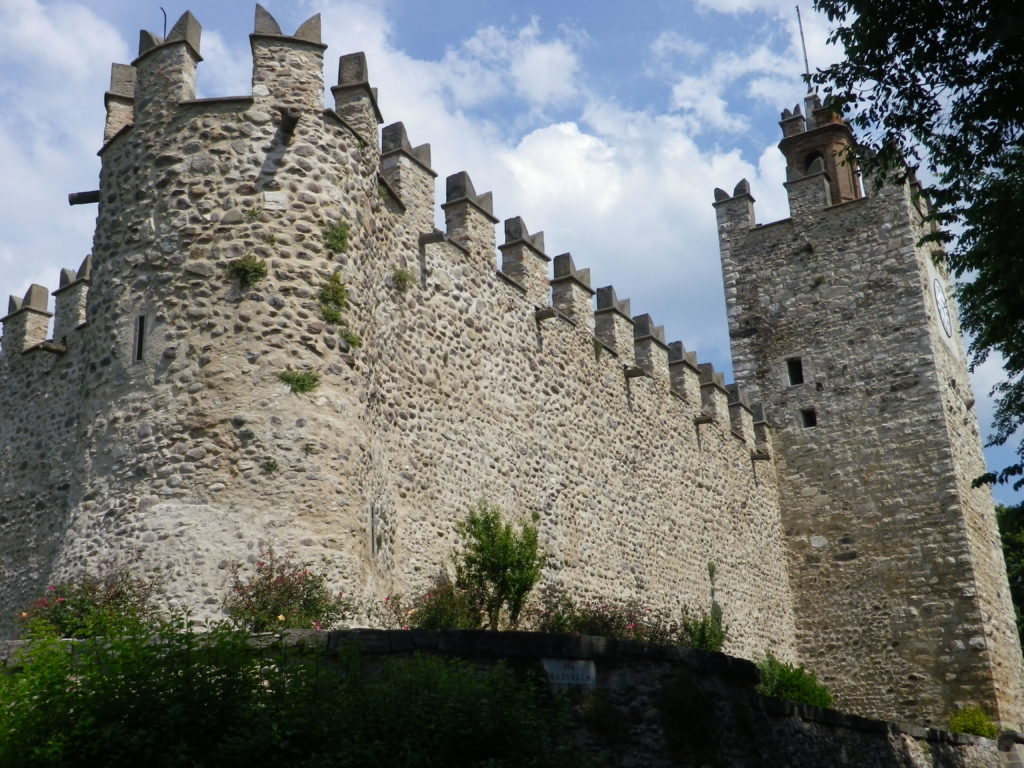
Easy cycling took me past another monastery, Rodengo-Saiano’s Abbey of Olivetana, originally a Cluniac foundation of the 11th century, as the circuit turned back toward San Pietro. But two of my favorite sites on this medieval banquet were yet to come. These belonged neither to the first nor second estate. Rather, they represented the buildings of prosperous commoners, constructed in a time when even relatively humble edifices were built to last.
The first was a collection of small buildings built along a stream. One was a mill, to grind cereals, then a forge to produce iron works. The forge was well-known for its agricultural tools, especially spades, which would have greatly helped local farmers in their struggles with the clayey soil found in this valley bottom. Incredibly, it was only in 1984 that the last blacksmith, Andrea Averoldi, died. The building where he lived now houses a small museum dedicated to the life and works of Pietro Malossi, an artist from Brescia who specialized in metal works.
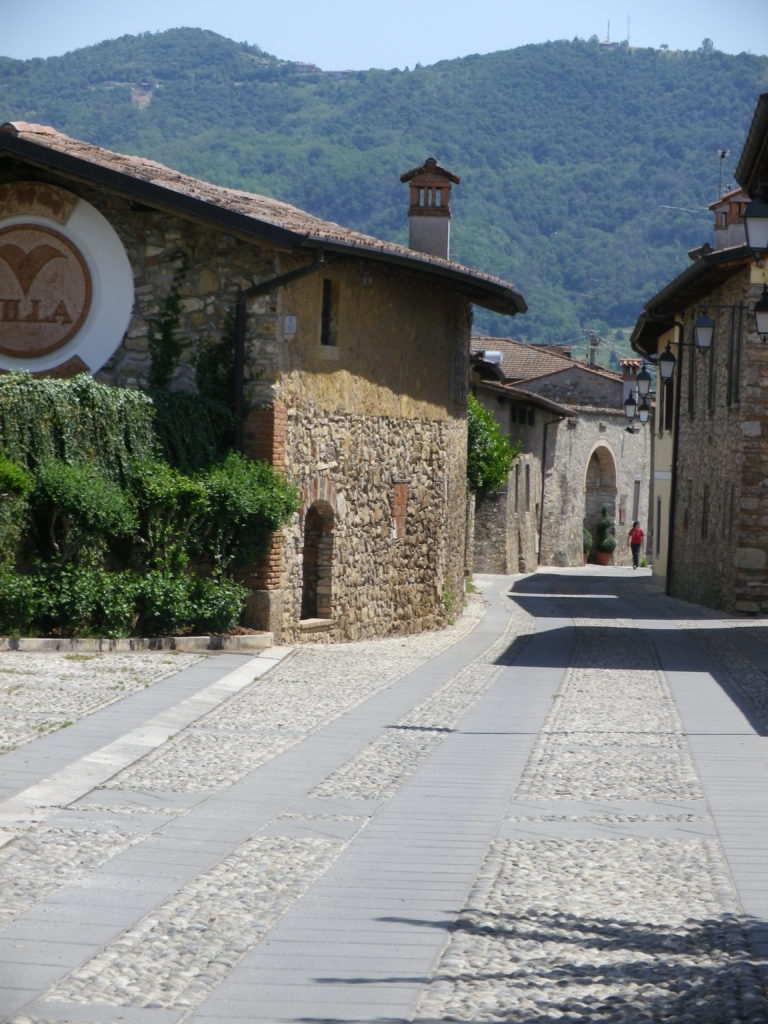
Further on, cycling slightly uphill through narrow tree-lined valleys to Montecelli Brusati, the small hamlet of Borgo Villa appeared like a vision from the past. Old stone buildings, now part of the Villa winery, exuded an air of timelessness. They nestled against a steep vine-covered hill. I had to stop, as the surroundings were quite photo-worthy. It was also where a beautiful (albeit less than a mile-long) bike path began, that continued the push uphill. Iconic villas dotted the landscape. Set against fresh, green spring color, the gentle beauty of them is enough to give rise to fantasies about living in Italy.

Once through Provezze, I literally coasted all the way to Provaglio, practically to the car, I ended the trail and my vacation with a resolve to return some day to bike the other wine-themed trails. In the meantime though, I will enjoy my bottles of wine, and work up my appetite for more fantastic meals and bike rides.
